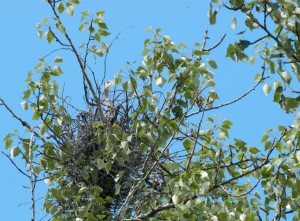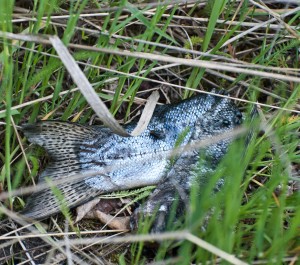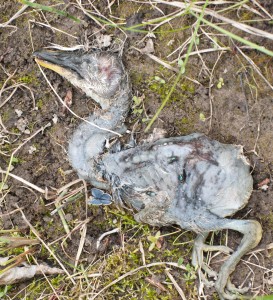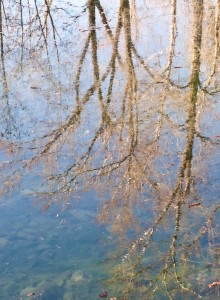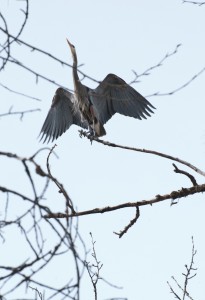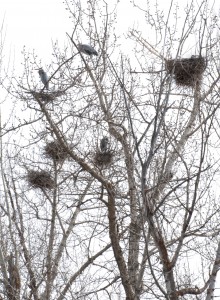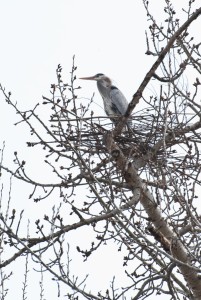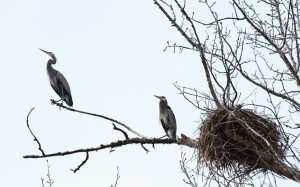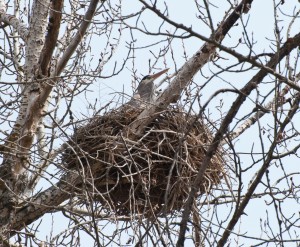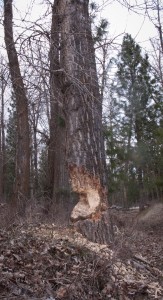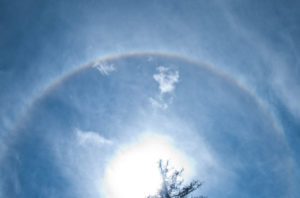The summer sun pulls me outside in the early morning. My bare feet curl long strands of grass between my toes. It is the kind of morning that makes you want to lie down on that soft cushion of green and spend the day watching the clouds shape-shift in the sky. But the solid blue above is empty of possibility. The sun beats down and soon sends me inside sweating.
Relentless sky blue,
sungold, and verdant green mix,
make burnt sienna
Clear blue sky day after day. Banks of mud encrusted rocks rise from the shore. The heron moves closer to the middle of the river. I move to the center of the trail, my bare legs scratched by dry grasses. The breeze begins to stir as the sun moves past the zenith of the sky. Hot breath of air buffets my sun reddened shoulders. By afternoon, no rain, only wild gusts of wind to cool the land.
victorious over fire,
beheaded by wind.
With the wind comes clouds. Clouds heavy with rain, drop only lightening bolts. Sonic booms of thunder rattle the peace of evening, shaking the dessicated landscape. The next morning, I am again pulled outside as thunder gives way to the growl of low-flying planes. I scan the mountainsides, looking for thin tendrils of smoke. Another blue sky day.
Burning memories
held by hills, skeleton trees
watch the sky for rain.
The phone rings. Our hike to Bear Mountain has been cancelled. A fire has erupted and the lookout is evacuated by helicopter. The clear blue skies of are now filled with silver and red slurry bombers. The evening news shows maps speckled in red flames across the west. But an empty halo encircles Missoula.
Their bounty withheld,
oblivious to the drought,
evening rain clouds flame.
A month of relentless sunny forecasts. Still, the blue skies fade into a dirty brownish grey. Smoke rides the jet stream where storms used to blow in, from Idaho and Washington. I no longer am pulled outside as the heat withers every living thing and the smoke clouds the breath.
Once in late August
fire turns Montana black,
and the blue moon orange.
The grey shrouded afternoon quiet is shattered by the sound of the phone. A friend across the valley asks about the smoke plume. I look to the hillsides, but nothing. Then the distant rumble of sirens. It is not just the smoke that has made me hold my breath these last weeks. I walk to the bridge and look north down the river.
Clouds rise from mountain
to sky, river rises in
buckets to mountain.
An army of a hundred men in yellow nomex wield polaskis. Back breaking fire lines are built. Tankers bomb the hillsides rusty red. Luck does her part, calming the winds. The fire is surrounded. The teams go in for the final kill of any living coals. Then the green trucks come and whisk the firefighters away to new battle lines.
Forty two days dry,
droughts worsen, a record breaks,
but not the weather.
At last the sky is grey, the deep grey of heavy rain clouds, not the veil of dirty smoke over blue. The first drops falling from the sky smell like campfires. The ground seems to smolder as the drizzle hits the dust, sending up small wiffs. Two weeks of spattered rain storms and it’s over. Golden leaves are the only flames on the hillsides and the first snow extinguishes the season.

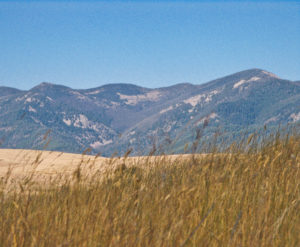
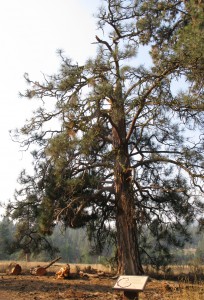
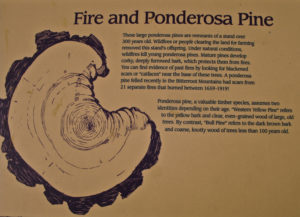
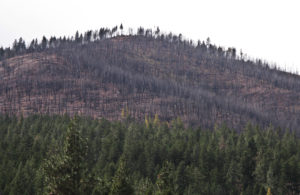
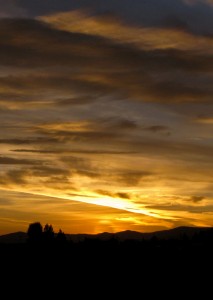
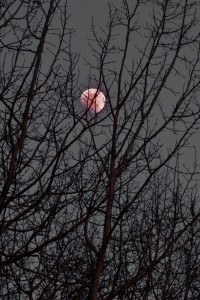
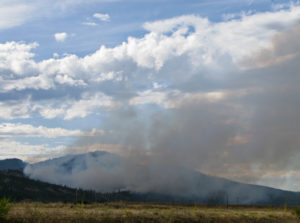
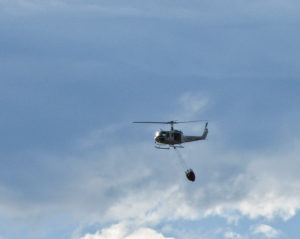
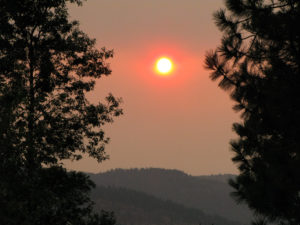
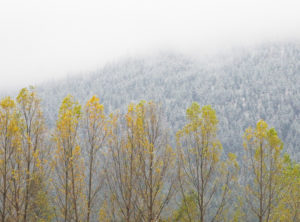
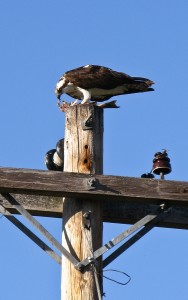
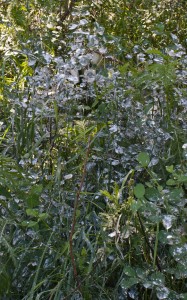
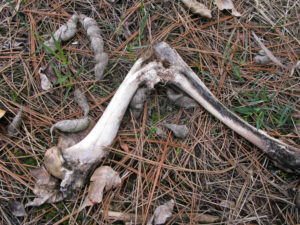 But these are not the things that bring revelation. Revelation comes when you stumble across the scattered bones of a half eaten deer and see the white hairy scat of the coyote and you remember the night, just a few nights ago, when you heard the yipping which increased in tempo, when you could almost hear the keening of celebration and death in the long crescendos of the howling and you know you are standing on sacred ground where one life fed many others and was transformed.
But these are not the things that bring revelation. Revelation comes when you stumble across the scattered bones of a half eaten deer and see the white hairy scat of the coyote and you remember the night, just a few nights ago, when you heard the yipping which increased in tempo, when you could almost hear the keening of celebration and death in the long crescendos of the howling and you know you are standing on sacred ground where one life fed many others and was transformed.